Description
Name in North American Boletes: Leccinum aurantiacum
Genus: Leccinum
Species: aurantiacum (for deciduous) & vulpinum (for conifers)
Common Name: “Red-Capped Scaber Stalk”
- Common Name 2: “Orange-Capped Scaber Stalk”
Tells: Bright orange/red cap. White pores age toward brown, & stain brown or red-brown. Flesh stains red, darkening to purple-gray or black, esp. by stem.
Other Information: Stem scabers start white & age through orange, red & finally dark brown/black. Stem sometimes has blue, green, or yellowish stains lower down. This is a “placeholder” name for all hardwood-loving, red- or orange-capped Leccinums. Click here for a table listing all the red- and orange-capped Leccinums, including both recognized North American species and the other “placeholder” names we’re using for general categories.
Science Notes: See this Article on the Red-Cap Leccinum Taxonomy Mess. Just about the only thing that’s really clear is the fact that real aurantiacum is a European species and what you’ve found is something different. Identifying your find to a proper, North American species may be impossible until enough DNA evidence gets compiled to tell what those species are. Who know? Maybe the European one really does span the ocean…
Edibility: Choice, but it turns black when cooked.
CHEMICAL TESTS:
- NH4OH (Ammonia): No data.
- KOH: No data.
- FeSO4 (Iron Salts): Cap flesh turns very pale blue.
Links:
 |
577 |  |
333 |  |
198 |

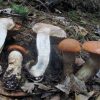
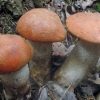
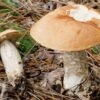
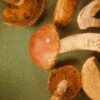

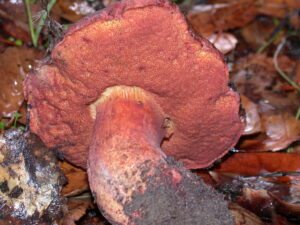
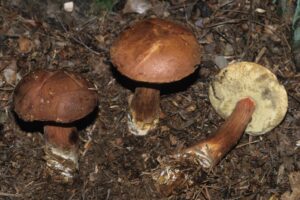
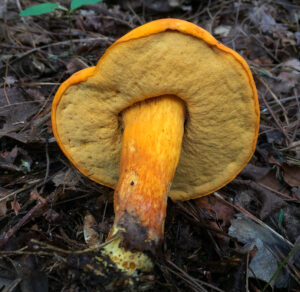
Got something to discuss?